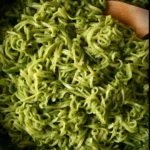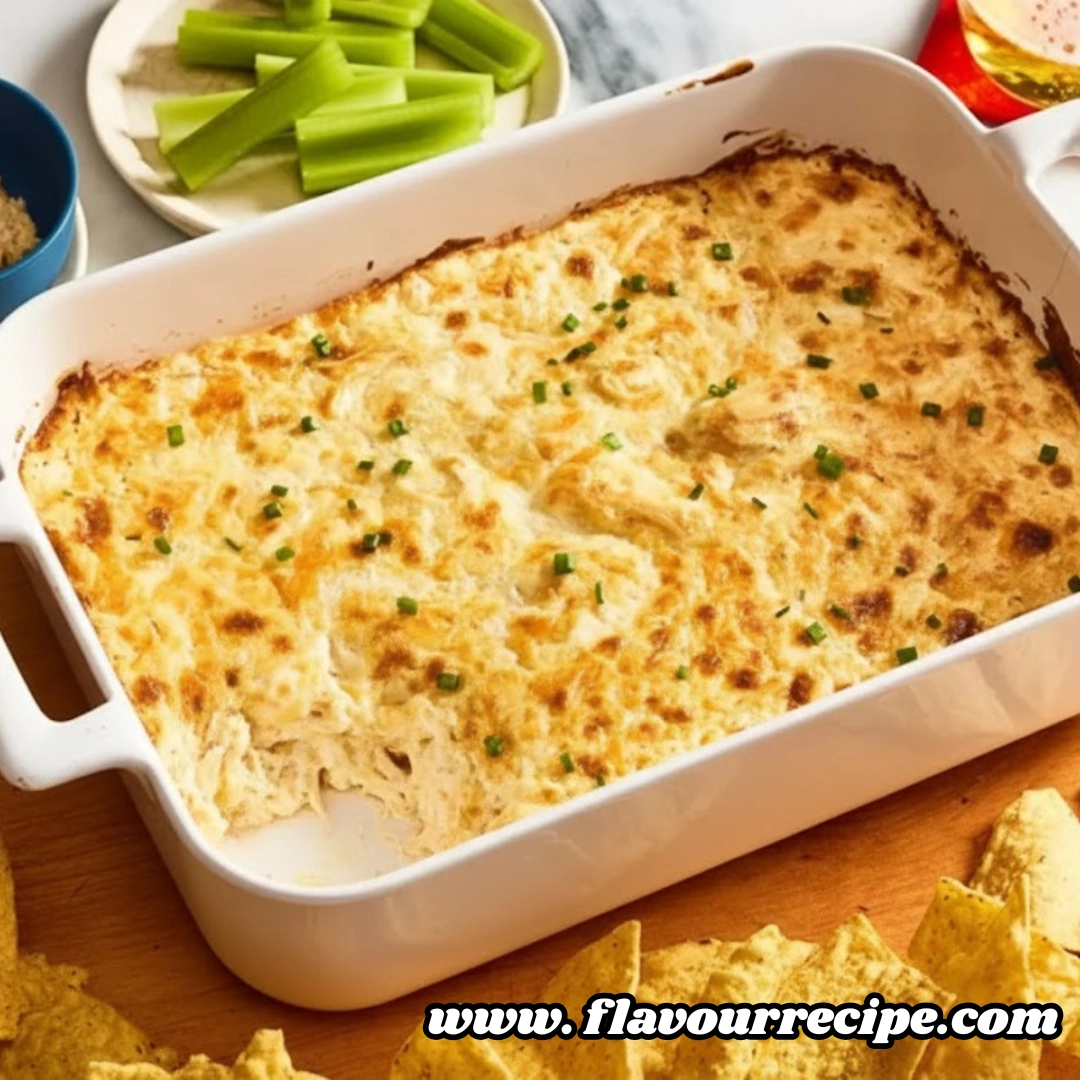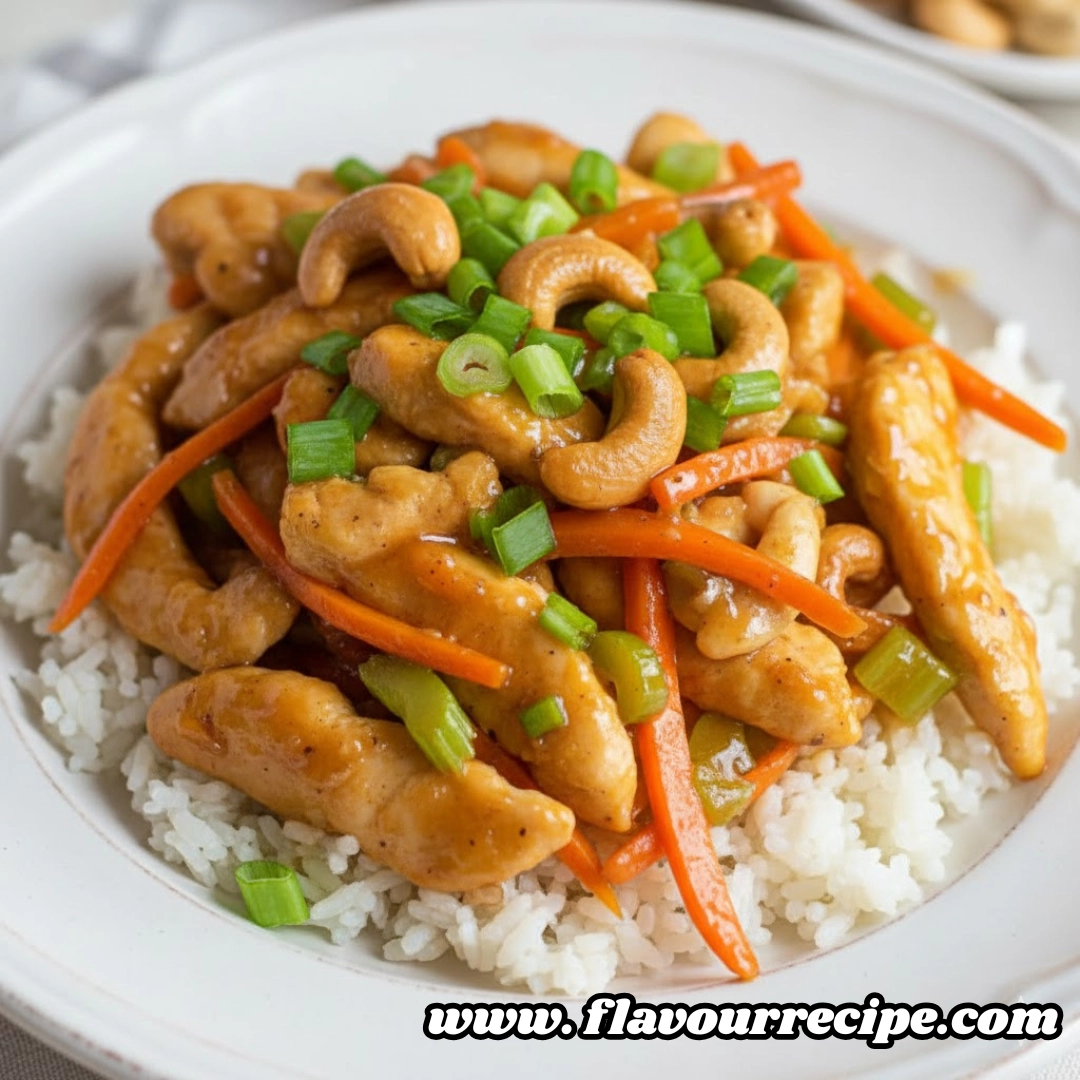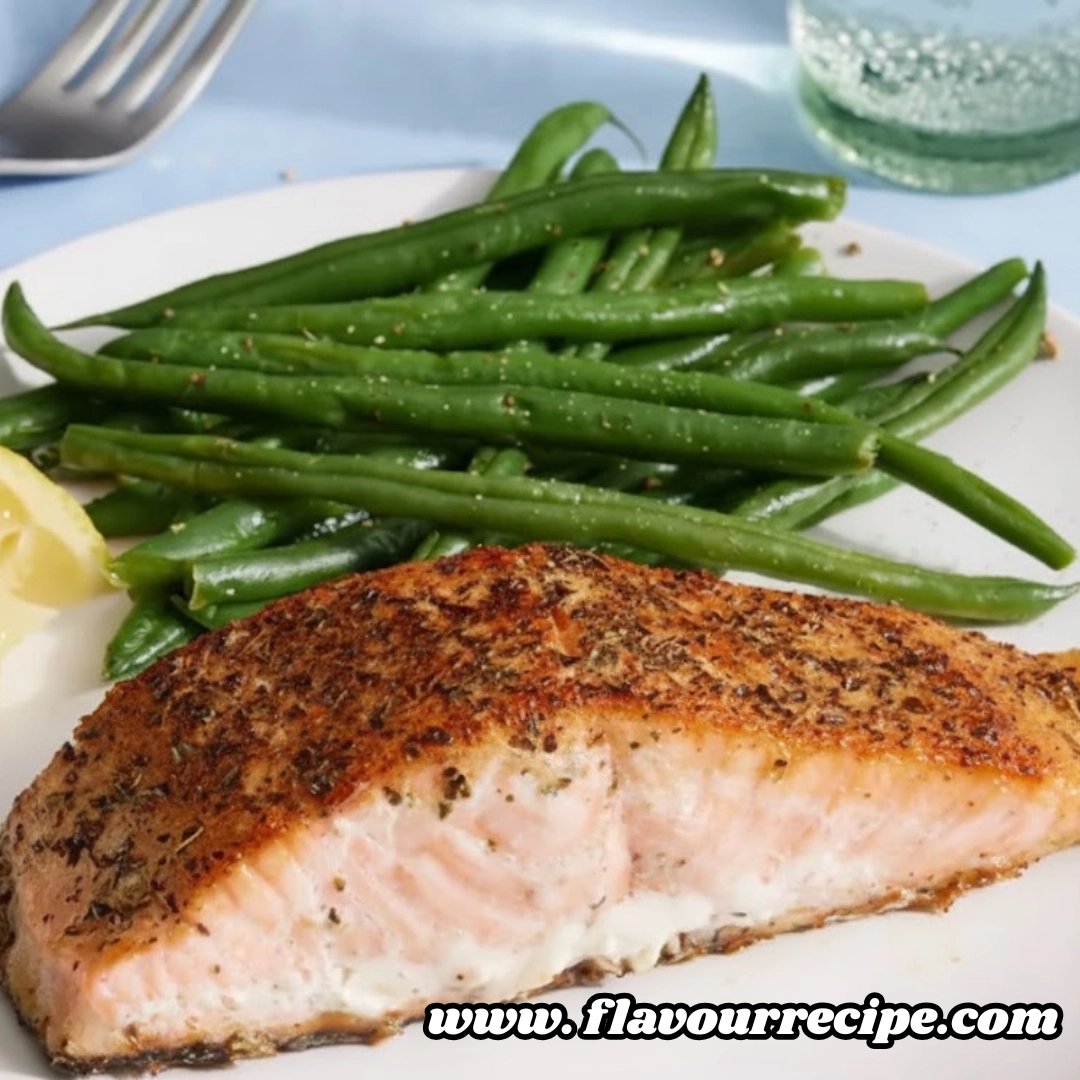Pasta doesn’t have to be a guilty pleasure. With the right sauce, it becomes a powerhouse of nutrition that fuels your body and satisfies your cravings. In this guide, we’re diving deep into healthy pasta sauce—from nutrient-packed green sauces to creamy plant-based alternatives, and even protein-rich blends that keep you full longer.
You’ll learn how to create dietitian-approved pasta sauces at home, discover ingredients that transform any meal into a health booster, and get expert tips on customizing recipes for gluten-free, dairy-free, or picky eaters. Plus, we’ll tackle real questions people ask online like “What is a healthy alternative to pasta sauce?” and give you easy, delicious solutions.
Looking for inspiration? Try our chicken sausage pasta or check out this philly cheesesteak pasta recipe for hearty ideas that can be made healthier with the right sauce twist.
Let’s kick things off with the reasons why healthy pasta sauce deserves a place in your weekly meal plan.
Table of Contents
Why Choose a Healthy Pasta Sauce?
Health Benefits of Choosing Nutritious Pasta Sauces
Most store-bought pasta sauces are loaded with added sugar, sodium, preservatives, and cheap oils. While they’re convenient, they often turn your bowl of pasta into a calorie bomb with little nutrition. Choosing or making your own healthy pasta sauce allows you to:
- Control ingredients and portions
- Avoid excess sodium and sugar
- Boost fiber, antioxidants, and vitamins
- Support heart health and digestion
- Help with weight management and satiety
A healthy pasta sauce can turn a basic bowl of noodles into a balanced meal, especially when combined with lean protein and vegetables.
Common Ingredients in Unhealthy Sauces and How to Avoid Them
Here are the top offenders in commercial sauces and what to swap them with:
| Unhealthy Ingredient | Better Alternative |
|---|---|
| Added sugar | Crushed tomatoes, balsamic vinegar, carrots |
| Cream or butter | Blended cottage cheese, olive oil, cashew cream |
| Excess salt | Herbs, garlic, lemon juice, nutritional yeast |
| Artificial thickeners | Pureed veggies like cauliflower, zucchini |
Next time you’re tempted to grab that jar from the store shelf, check the label. If sugar or “cream” is among the first five ingredients, it’s best to skip it.
Ready to build your sauce with real ingredients? Head to Part 2 where we explore powerhouse components that form the base of any healthy pasta sauce.
Top Ingredients in a Healthy Pasta Sauce
Best Vegetables to Blend into Sauces (Broccoli, Spinach, Bell Peppers, etc.)
The beauty of healthy pasta sauces lies in their ability to hide (or showcase!) vegetables in the tastiest ways. These veggie-packed sauces are not only vibrant and flavorful—they’re loaded with fiber, antioxidants, vitamins, and minerals. Here are the best vegetables to include:
PrintHealthy Pasta Sauce: The Best Nutrient-Packed Sauces for Every Pasta Lover
This creamy healthy green pasta sauce is packed with broccoli, spinach, and cottage cheese. A quick, nutrient-dense recipe perfect for weeknight dinners or meal prep.
- Prep Time: 10 minutes
- Cook Time: 20 minutes
- Total Time: 30 minutes
- Yield: 6 servings 1x
- Category: Main Course, Sauce
- Method: Blender, Stovetop
- Cuisine: American
Ingredients
- 425 g pasta of choice
- 2 small broccoli crowns (chopped into florets)
- ¾ cup reserved broccoli cooking liquid
- 2–3 garlic cloves, pressed
- ½ cup milk
- ¾ cup freshly grated parmesan cheese
- 1 cup frozen spinach (thawed and drained)
- 2 tbsp olive oil
- Juice of ½ lemon
- ¼ tsp salt
- ¼ cup fresh basil
- ½ cup cottage cheese
- Red pepper flakes (for topping)
- Fresh parmesan (for topping)
Instructions
- 1. Cook pasta according to package directions. Drain and set aside.
- 2. Steam broccoli in boiling salted water for 5 minutes until tender. Reserve ¾ cup of cooking water.
- 3. Add steamed broccoli, reserved liquid, garlic, milk, parmesan, spinach, lemon juice, salt, basil, and cottage cheese to a blender.
- 4. Blend until smooth and creamy.
- 5. Toss sauce with prepared pasta. Adjust seasonings.
- 6. Top with red pepper flakes and fresh parmesan. Serve warm.
Notes
- Use high-powered blender for best texture.
- Add grilled chicken or beans to increase protein.
- Store in an airtight container in the fridge for up to 5 days.
- Freeze for up to 3 months in portioned containers.
Nutrition
- Serving Size: 1 cup
- Calories: 420
- Sugar: 5g
- Sodium: 411mg
- Fat: 11g
- Saturated Fat: 4g
- Unsaturated Fat: 6g
- Trans Fat: 0g
- Carbohydrates: 62g
- Fiber: 5g
- Protein: 20g
- Cholesterol: 14mg
- Broccoli – Rich in Vitamin C, fiber, and iron. When steamed and blended, broccoli creates a smooth, creamy base.
- Spinach – Mild in flavor and packed with iron, folate, and magnesium. Great for green sauces.
- Bell peppers – Add natural sweetness and vitamin A, perfect for a red pepper sauce.
- Cauliflower – Makes an excellent low-calorie thickener for creamy white sauces.
- Zucchini – Moisture-rich and mild; it blends effortlessly into tomato sauces.
- Carrots – Naturally sweet and packed with beta-carotene. A great sugar-free sweetener.
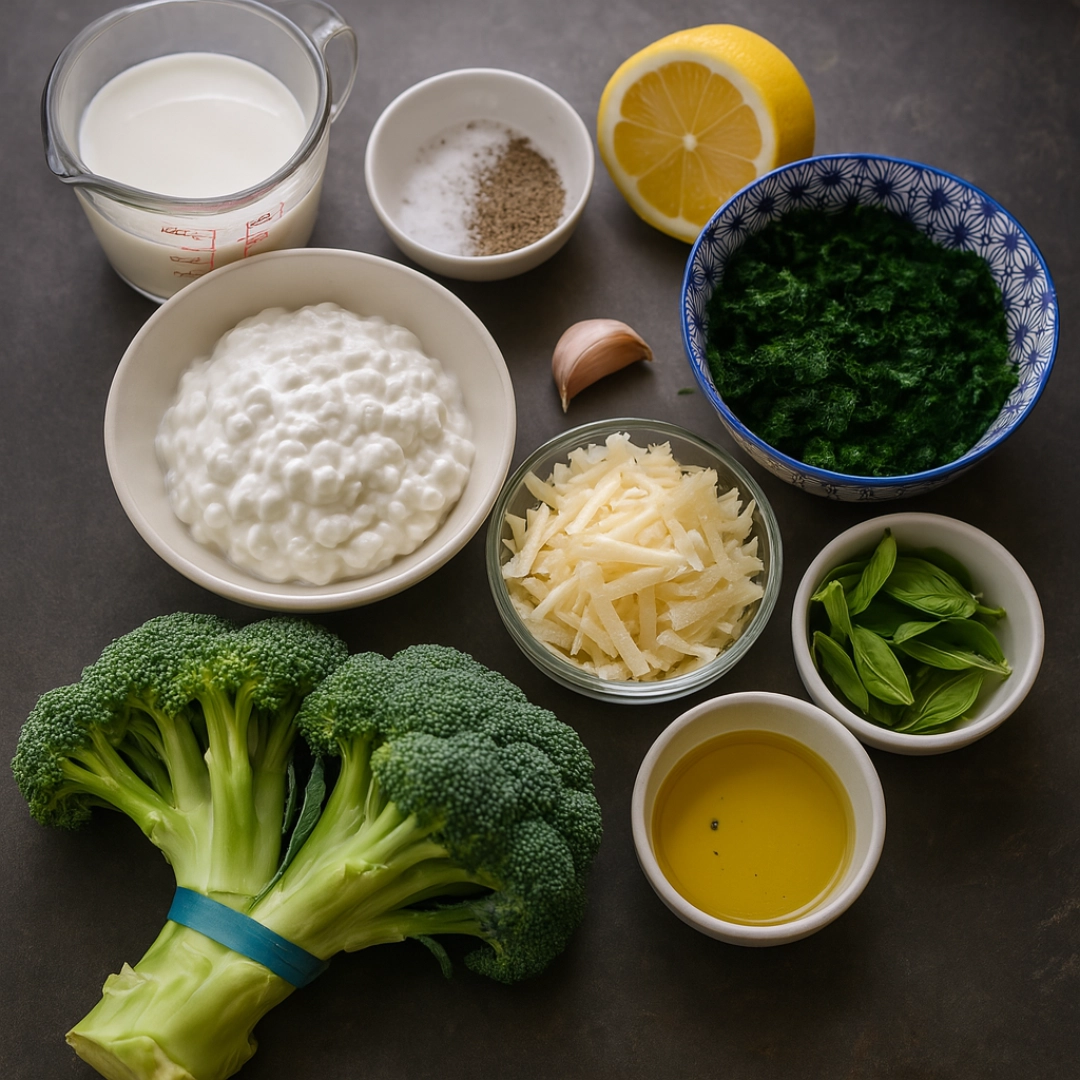
Blending vegetables not only enhances the texture but makes the sauce more satisfying. These veggie-based sauces are great for picky eaters or anyone looking to eat healthier without sacrificing taste.
Lean Dairy and Plant-Based Alternatives (Cottage Cheese, Cashew Cream, Nutritional Yeast)
If you want creamy without the cream, it’s time to think outside the dairy carton. Here are some superstar healthy swaps:
| Traditional Ingredient | Healthy Alternative | Why It Works |
|---|---|---|
| Heavy cream | Cottage cheese | High in protein and low in fat, blends smooth. |
| Parmesan cheese | Nutritional yeast | Adds cheesy flavor and B-vitamins with no dairy. |
| Cream cheese | Greek yogurt or tofu | Protein-packed and creamy with lower fat. |
| Ricotta | Cashew cream | A vegan alternative that’s rich and velvety. |
To make your own cashew cream, soak 1 cup of raw cashews in water for 2–4 hours, drain, and blend with ½ cup water, garlic, and lemon juice. It’s perfect for sauces, especially when combined with herbs or cooked veggies.
Incorporating these healthy swaps lets you keep the comfort-food taste of pasta sauce while lightening up the fat content and boosting nutrients.
Don’t miss our seafood pasta recipes for creative pairings that go beautifully with these clean, creamy sauce bases.
Next, let’s dive into a complete dietitian-approved recipe for a green pasta sauce that has taken the internet by storm.
The Dietitian-Approved Green Pasta Sauce Recipe
Detailed Ingredient Breakdown and Health Benefits
This creamy green pasta sauce is not just vibrant—it’s loaded with over 4 cups of vegetables, making it a nutrient-dense meal even picky eaters will love. Inspired by the popular Healthy Green Pasta Sauce from nourishedbynic.com, this recipe is creamy, cheesy, and packed with broccoli, spinach, and herbs.
Here’s what goes into the sauce and why it’s great for you:
| Ingredient | Health Benefit |
|---|---|
| Broccoli | High in fiber, Vitamin C, and supports digestion |
| Cottage Cheese | Low-fat protein source and makes the sauce creamy |
| Spinach | Packed with iron, magnesium, and antioxidants |
| Parmesan Cheese | Adds flavor and calcium |
| Garlic | Boosts immunity and flavor without salt |
| Lemon Juice | Enhances absorption of iron and adds brightness |
| Olive Oil | Heart-healthy fat that helps nutrient absorption |
| Fresh Basil | Anti-inflammatory and fragrant |
| Milk | Lightens the texture while adding calcium |
Each ingredient contributes flavor and nourishment, creating a well-rounded, wholesome sauce you can feel good about.
Step-by-Step Cooking and Blending Instructions
You don’t need a culinary degree or hours of kitchen time—this dish takes just 30 minutes and a blender.
1. Cook the Pasta
Boil a large pot of water with a generous pinch of salt. Add your favorite pasta (regular, whole wheat, or chickpea pasta for more protein) and cook until al dente. Drain and set aside, reserving ¾ cup of the cooking water.
2. Steam the Broccoli
Bring another pot of water to boil, add chopped broccoli florets, and steam until soft—about 5 minutes. Drain and reserve ¾ cup of the water from steaming for blending later.
3. Blend the Sauce
In a blender or food processor, combine:
- Steamed broccoli
- ¾ cup reserved cooking water
- 2-3 cloves garlic
- ½ cup milk
- ¾ cup grated parmesan
- 1 cup thawed spinach
- Juice of ½ lemon
- ¼ teaspoon salt
- ¼ cup fresh basil
- ½ cup cottage cheese
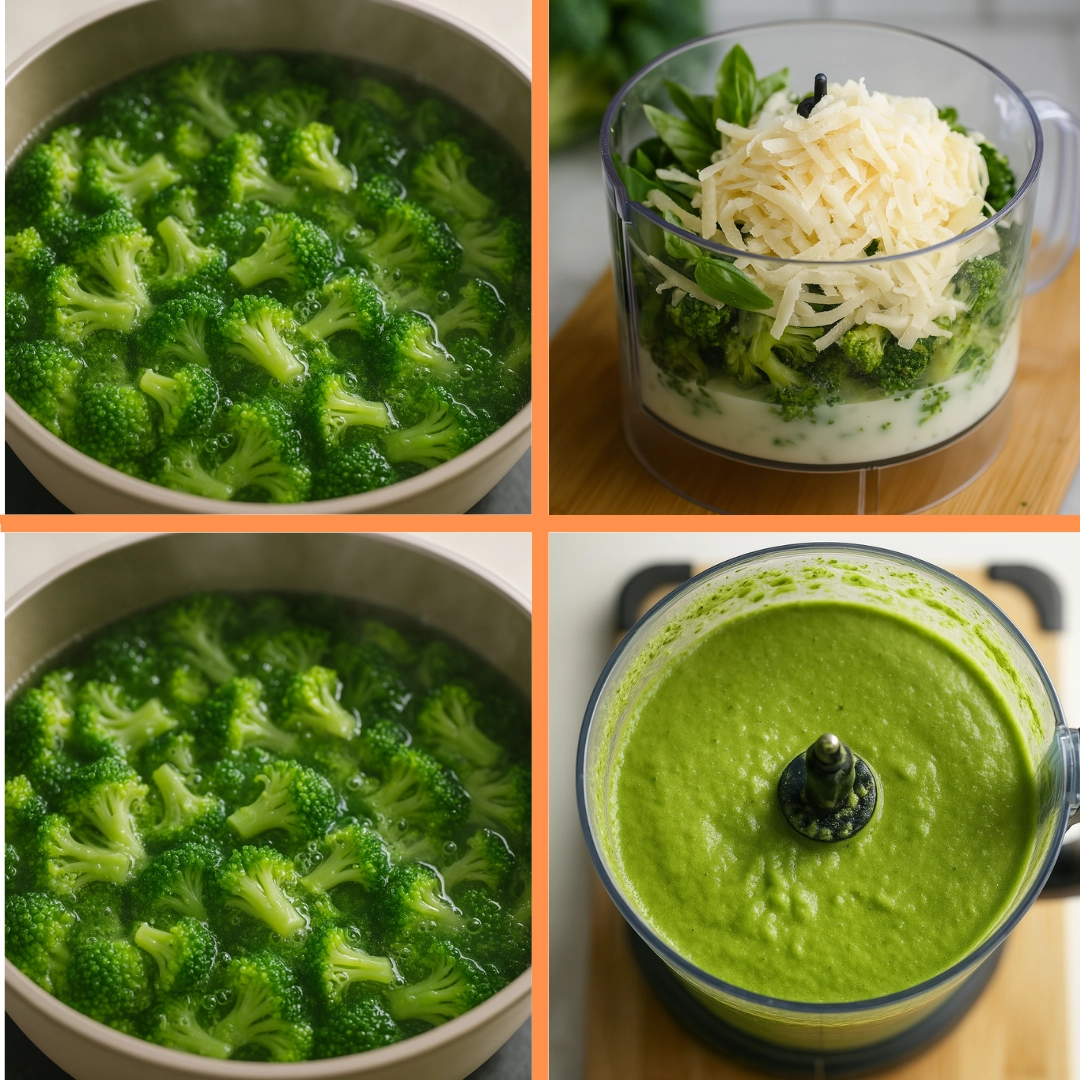
Blend until smooth and creamy. For extra creaminess, use a high-speed blender and add liquids first to help it blend faster.
4. Combine and Serve
Pour the sauce over the cooked pasta. Mix well, adjust seasoning if needed, and top with red pepper flakes, extra parmesan, or grilled chicken for added protein.
Pro Tip: Want to add more veggies? Serve it with roasted broccoli or stir in sautéed mushrooms.
Check out this spaghetti salad recipe for a fun twist on pasta that also goes great with this green sauce chilled.
In the next part, we’ll explore all the ways to customize this healthy pasta sauce to suit your dietary needs, from gluten-free to dairy-free.
Customizing Your Healthy Pasta Sauce
Healthy doesn’t mean one-size-fits-all. Whether you’re dairy-free, gluten-free, nut-free, or just out of one ingredient, your pasta sauce can still be a win. Here’s how to modify your healthy pasta sauce recipe without losing its creamy texture or rich flavor.
Gluten-Free, Dairy-Free, and Nut-Free Modifications
To Make It Gluten-Free
- Use gluten-free pasta made from chickpeas, brown rice, lentils, or quinoa.
- Make sure all packaged ingredients (like parmesan or cottage cheese) are labeled gluten-free to avoid hidden wheat traces.
To Make It Dairy-Free
- Substitute cottage cheese with a dairy-free ricotta alternative (almond- or tofu-based).
- Use nutritional yeast instead of parmesan cheese for a cheesy taste without the dairy.
- Swap in unsweetened oat milk or almond milk for regular milk.
Note: While these swaps maintain the creamy consistency, taste may vary slightly. Always taste-test and adjust your seasonings before serving.
To Make It Nut-Free
- Good news: the original recipe is already nut-free.
- If you’re adding a plant-based protein like tofu or seeds, confirm they’re processed in nut-free facilities if allergies are severe.
How to Adjust Flavor and Texture Without Compromising Nutrition
Want a little more zing or creaminess? Here are healthy ways to tailor the taste:
| Adjustment Needed | Healthy Solution |
|---|---|
| More Creaminess | Add more cottage cheese or a splash of plant milk |
| Bolder Flavor | Increase garlic, lemon juice, or add sun-dried tomatoes |
| Earthy Depth | Toss in sautéed mushrooms or roasted onions |
| More Protein | Blend in soft tofu or white beans for added protein |
| Less Tanginess | Skip lemon juice and add a pinch of sugar or grated carrot |
This flexibility lets you make the same base sauce fit every palate in your household—from kids to keto-dieters.
Don’t miss our post on creamy Italian pasta salad, where you can also test-drive many of these swaps for a cold dish option.
Up next, we’ll look at three more healthy pasta sauce ideas to expand your homemade sauce rotation, with something for every mood.
More Homemade Healthy Pasta Sauce Ideas
Don’t stop at green. A world of colorful, creamy, and health-packed sauces awaits you. Whether you’re vegan, dairy-free, or just bored of marinara, here are three homemade healthy pasta sauce ideas to reinvent your meals.
Creamy Red Pepper Sauce (Vegan + Dairy-Free)
Ingredients:
- 2 large roasted red bell peppers
- 1 small onion, sautéed
- 3 cloves garlic
- ¼ cup raw cashews (soaked)
- ½ cup unsweetened plant milk
- 1 tbsp nutritional yeast
- Salt and pepper to taste
How to Make It:
Blend all ingredients until smooth and warm in a saucepan. Serve with whole wheat penne or chickpea pasta.
Why it works: Roasted peppers bring sweetness and antioxidants, while cashews create that irresistible creamy texture. Nutritional yeast gives a dairy-free cheesy punch.
Tomato-Free Beetroot & Carrot Sauce
Ingredients:
- 1 cup cooked beets
- 1 cup steamed carrots
- 1 garlic clove
- ¼ cup Greek yogurt or dairy-free alternative
- 2 tbsp olive oil
- Lemon juice
- Salt, cumin, and fresh herbs (parsley or dill)
How to Make It:
Blend all ingredients into a silky, sweet-savory sauce. Heat lightly and pour over spaghetti or lentil pasta.
Why it works: This vibrant pink sauce is rich in fiber, Vitamin A, and plant compounds that support liver function. Plus, it’s perfect for kids who “don’t like veggies.”
Mushroom Walnut “Meaty” Sauce
Ingredients:
- 2 cups chopped mushrooms
- ½ cup toasted walnuts
- 1 small onion
- 2 cloves garlic
- 2 tbsp tomato paste
- ½ cup vegetable broth
- Fresh thyme, pepper, and smoked paprika
How to Make It:
Sauté onion and mushrooms. Add garlic, tomato paste, and broth. Pulse walnuts in a food processor and stir them in for texture.
Why it works: It’s a vegan Bolognese loaded with omega-3s, protein, and deep umami flavor—without any meat or dairy.
Want to go even further? Check out pappardelle pasta for hearty noodles that hold up to thick, textured sauces like the mushroom walnut blend.
Next up, let’s explore how to add protein to your healthy pasta bowls without going overboard on calories.
How to Add Protein to Your Healthy Pasta Meals
Adding protein to pasta isn’t just about bulking up your dish—it’s about creating balanced meals that fuel your body and keep you full longer. The right protein addition turns a bowl of pasta from a side dish into a complete, satisfying main. And yes, you can do it without drowning it in cream or cheese.
High-Protein Pasta Options
Swapping your regular noodles for high-protein varieties is a simple way to amp up nutrition without extra steps.
| Pasta Type | Protein per Serving | Notes |
|---|---|---|
| Chickpea Pasta | 13-15g | Gluten-free, nutty taste |
| Lentil Pasta | 13-14g | Firm texture, earthy flavor |
| Quinoa + Corn Pasta | 8-9g | Good for light sauces |
| Whole Wheat Pasta | 7-8g | Rich in fiber, hearty flavor |
| Edamame Pasta | 18-20g | Mild and high-protein, very filling |
These options cook similarly to standard pasta and work beautifully with veggie-packed sauces, especially green or tomato-based ones.
Plant-Based and Animal Protein Add-Ins
Already cooked your noodles? No problem. Add these easy protein-rich toppings or mix-ins:
Plant-Based Options:
- Edamame: Toss in shelled edamame for texture and 17g of protein per cup.
- White beans: Mild flavor and creamy bite; perfect in tomato or beet sauces.
- Tofu or Tempeh: Pan-fried and cubed, they soak up sauce beautifully.
- Lentils: Great with mushroom or tomato sauces for a hearty bite.
- Hemp Seeds: Sprinkle on top for extra protein and healthy fats.
Animal-Based Options:
- Grilled Chicken Breast: A classic, lean source that pairs with any sauce.
- Ground Turkey or Chicken: Browned and mixed directly into your sauce.
- Shrimp or Salmon: High in protein and omega-3s; ideal with pesto or lemon sauces.
- Eggs: A soft-boiled or poached egg can add a rich finish to creamy sauces.
Tip: Blend a few white beans or silken tofu directly into the sauce if you want added protein without extra cooking.
Looking for inspiration? Try this Tuscan chicken pasta where lean protein and flavor-packed sauce come together beautifully.
In our next section, we’ll break down which pasta shapes pair best with your healthy sauces, so your dish is not just delicious—but also texturally perfect.
Best Pasta Types for Pairing with Healthy Sauces
A good sauce deserves the right pasta. The shape and texture of your noodles can make or break the experience. Whether you’re swirling a creamy green sauce or ladling a chunky mushroom blend, pairing the right pasta type with your healthy pasta sauce is key to mouthfeel, flavor absorption, and even portion control.
Choosing Between Whole Grain, Chickpea, Lentil, or Veggie Pasta
Let’s break down the healthiest and most sauce-friendly pasta options:
| Pasta Type | Best For | Why It Works |
|---|---|---|
| Whole Wheat | Tomato sauces, veggie sauces | Nutty taste and chewy texture hold sauces well |
| Chickpea Pasta | Creamy or spicy sauces | High protein, firm bite, mild flavor |
| Lentil Pasta | Bold sauces (pepper, walnut) | Dense and hearty, great for thick sauces |
| Zucchini Noodles | Pesto, green sauces, raw toppings | Low-carb and hydrating, best for lighter sauces |
| Quinoa Pasta | Creamy or blended veggie sauces | Slightly grainy texture, works with silky sauces |
Tip: Avoid overcooking these alternative pastas—especially chickpea and lentil versions—as they can get mushy and break apart in sauce.
Cooking Times and Texture Tips for Best Pairing
Healthy pastas tend to cook faster and need more finesse. Keep these texture-saving tips in mind:
- Salt the water generously – Especially for veggie-based or gluten-free pastas which lack strong flavor.
- Undercook slightly (al dente) – The pasta will continue to soften once mixed with hot sauce.
- Reserve pasta water – Adding a few tablespoons of starchy pasta water to your sauce helps it cling better to the noodles.
- Rinse only if using in salads – For hot sauces, don’t rinse your pasta. You’ll lose the starch that helps sauce bind.
Texture is everything when it comes to a satisfying bite. A chunky sauce on a delicate noodle will fall apart, while a silky sauce needs ridged pasta to hang onto.
Want to try something fun and satisfying? Discover great ideas like this Greek chicken pasta salad, which pairs beautifully with pesto or citrusy green sauces.
Next up, we’ll show you how to store and meal prep your healthy pasta sauces—because good food should last you more than just one meal.
Meal Prep & Storage Tips for Healthy Pasta Sauce
Healthy pasta sauces aren’t just good for dinner tonight—they’re perfect for busy weeks when you want quick, nutritious meals on hand. Whether you’re meal prepping lunches or freezing a big batch for later, storing your homemade healthy pasta sauce properly keeps the flavor, texture, and nutrition intact.
How to Store Sauce in the Fridge or Freezer Without Losing Flavor
Refrigerator Storage (up to 5 days):
- Let the sauce cool completely before storing.
- Use an airtight glass or BPA-free plastic container.
- Label with the date and contents.
- Reheat in a saucepan or microwave, adding a splash of water or milk to loosen.
Freezer Storage (up to 3 months):
- Use freezer-safe containers or silicone portion trays for individual servings.
- Leave ½ inch of space at the top of the container for expansion.
- For best results, thaw overnight in the fridge before reheating.
Pro Tip: Avoid freezing sauces with large amounts of dairy unless it’s well-blended (like cottage cheese or milk-based sauces). They reheat smoother than chunky, cheesy sauces.
Make-Ahead Tricks for Busy Weeknights
If you’re juggling a family, work, or school, meal prep is your best friend. Here’s how to make healthy pasta night faster and smarter:
| Prep Tip | Why It Works |
|---|---|
| Blend sauce ahead | Saves 20 minutes—just reheat and pour over pasta |
| Portion in freezer bags | Flat bags thaw faster and stack neatly in the freezer |
| Batch cook pasta | Toss with oil, store separate from sauce to prevent sogginess |
| Prep toppings in advance | Grilled chicken, sautéed mushrooms, chopped herbs stay fresh for 3 days |
| Label with sauce type | Helps you rotate through different flavor profiles |
Planning just one batch of green or beet pasta sauce a week gives you a ready-made base for 2-3 meals.
Check out this unique Greek tortellini pasta salad, which uses similar storage tips to keep your pasta dishes crisp and flavorful even days later.
Next up: Let’s cover the most common pasta sauce mistakes that can ruin even the healthiest intentions—and how to avoid them.
Common Mistakes When Making Healthy Pasta Sauce
Making a healthy pasta sauce isn’t difficult—but small errors can sabotage your efforts. Whether it’s flavor imbalance, texture issues, or poor nutrient absorption, these mistakes are easy to fix once you know what to look for.
Over-Salting or Overcooking Ingredients
Too much salt or heat can destroy both flavor and nutrients. Here’s how to avoid it:
- Don’t salt too early. Wait until the sauce has reduced slightly, then season to taste.
- Steam veggies instead of boiling. Boiling can leach nutrients into the water (unless you reuse it, like in green sauces).
- Avoid high heat when reheating. Gently warm sauces to preserve texture and flavor.
- Taste as you go. Small seasoning tweaks make a big difference.
Want bold flavor without extra salt? Use lemon juice, garlic, pepper, and fresh herbs to elevate any sauce.
Skipping Healthy Fats That Are Essential for Nutrient Absorption
Low-fat isn’t always better—your body needs fat to absorb fat-soluble vitamins like A, D, E, and K. Here’s what to do:
- Always include a healthy fat. A tablespoon of olive oil, avocado, tahini, or full-fat dairy boosts absorption and taste.
- Balance macros. If you’re going ultra-low fat, make sure to include enough protein or fiber to keep the sauce filling.
- Use fat to enhance flavor. Toasted nuts, cheese, or even an egg yolk can deepen richness without turning it into junk food.
Forgetting to Blend Properly
A lumpy sauce is less appetizing and harder to digest—especially for picky eaters or kids.
- Use a high-speed blender for green or creamy sauces.
- Add liquids first (like milk or oil), then blend solid ingredients for a smoother result.
- Don’t skip the pasta water. The starch helps sauce cling better to your noodles.
Pro Tip: Make your sauce in advance and let it rest. Flavors develop and thicken over time, giving you a richer result with less effort.
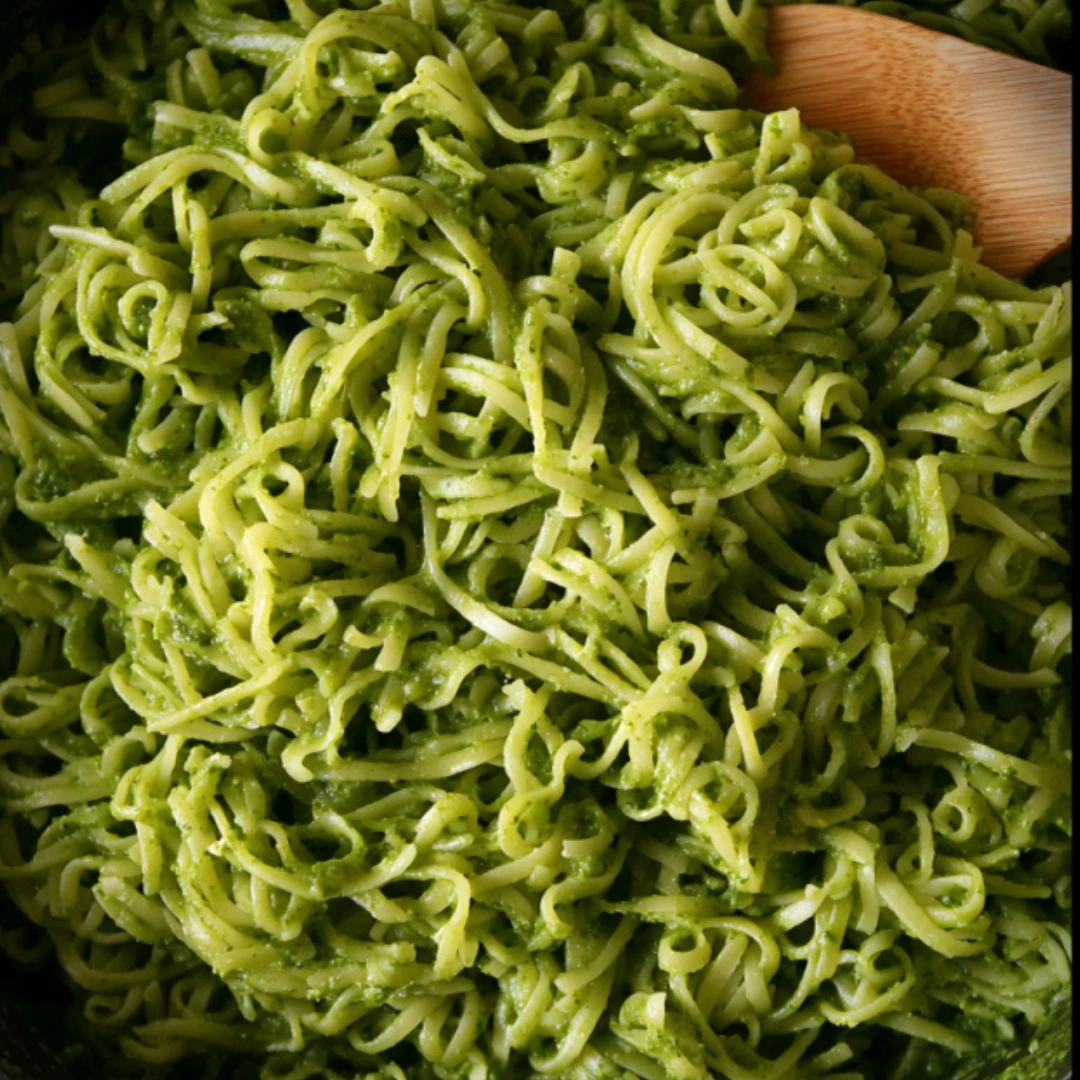
Looking for inspiration? Try this smooth, rich base with our creamy tomato burrata pasta recipe—it’s the perfect platform for practicing these healthy sauce tips.
Conclusion: Bring Flavor & Nutrition Together with Healthy Pasta Sauce
Healthy doesn’t mean boring—especially when it comes to pasta. By choosing the right ingredients, blending in nutrient-rich vegetables, and skipping the heavy creams and sugars, you can transform any pasta dish into a balanced, nourishing meal.
From dietitian-approved green sauces to vegan red pepper blends and protein-packed walnut mushroom sauces, your options for healthy pasta sauce are endless and delicious. Whether you’re meal-prepping for the week, feeding picky eaters, or looking for a light dinner after a long day—there’s a clean, flavorful sauce waiting to top your favorite noodles.
Don’t miss our twist on protein-rich comfort food like chicken tortellini alfredo, perfectly balanced with a veggie-forward sauce.
Love simple, flavorful dishes? Don’t miss a bite!
Follow us on Facebook for daily comfort food ideas, quick & easy dinners, and mouthwatering inspiration: Flavour Recipe Facebook
Join us on Pinterest for stunning food boards, meal prep tips, and crowd-pleasing family favorites: Flavour Recipe Pinterest
Let’s cook something delicious together!
Frequently Asked Questions About Healthy Pasta Sauce
What is the healthiest sauce to put on pasta?
The healthiest pasta sauces are those made from whole vegetables, lean proteins, and heart-healthy fats. Examples include:
Green veggie sauces (like broccoli and spinach blends)
Tomato-based sauces with no added sugar
Red pepper or beet-based sauces
Pesto made with olive oil and greens like kale or arugula
These sauces are rich in vitamins, fiber, and antioxidants while being low in processed ingredients.
What is a healthy alternative to pasta sauce?
If you’re looking for a lighter or dairy-free option, try:
Blended roasted vegetables like zucchini, red peppers, or carrots
Avocado-based sauce with lemon and garlic
Tahini or hummus thinned with warm water
Cashew cream with herbs
Greek yogurt with garlic and lemon
These alternatives are great for those who want to avoid traditional creamy or jarred sauces without sacrificing flavor.
What is healthy to put on pasta?
To make pasta a complete and healthy meal, consider adding:
Lean proteins: grilled chicken, shrimp, or tofu
Fresh or roasted vegetables: bell peppers, broccoli, spinach
Healthy fats: olive oil, seeds, avocado
Fresh herbs and citrus for flavor without salt
High-protein pasta made from lentils or chickpeas
A well-balanced pasta dish includes complex carbs, protein, fats, and fiber.
What is the best healthy sauce?
The best healthy sauce depends on your needs, but green pasta sauce stands out because it blends multiple veggies (like broccoli, spinach, and basil), lean dairy (cottage cheese), and heart-healthy fats (olive oil). It’s:
Quick to make (30 minutes)
Kid-friendly and customizable
Great for meal prep
Packed with over 4 cups of vegetables
If you want creamy without the guilt, this green sauce is a go-to.

